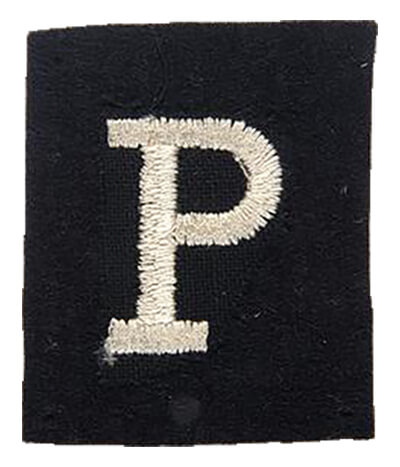| Page Created |
| January 23rd, 2024 |
| Last Updated |
| January 23rd, 2024 |
| Country |
 |
| Related Pages |
| Allied Biographies Axis Biographies |
| Name |
 |
| Royal Engineers |
 |
| Units |
| GHQ Liaison Regiment |
 |
| Biography |
Miles Belfrage Reid enters the world on May 5th, 1896, at Cotmandene Lodge, Dene Street, Dorking, Surrey, as the fourth son of the retired tea planter Russell Belfrage Reid and Margaret Laura (née Willett) Reid. His christening takes place at St Martin’s Church in Dorking on June 14th, 1896.
His early education is at Hazelwood School until April 1906, after which he attends a larger preparatory school with his brother Graham. His academic journey continues at the Royal Naval College Osborne for two years, followed by the Royal Naval College Dartmouth from January 1911 to December 1912. During his time at Dartmouth, he plays for the Rugby XV in 1911 and, in his third term in 1912, receives the King’s Medal from Admiral the Hon Sir Heworth Meux. This prestigious award recognises his gentlemanly conduct and positive influence among his peers. While at Dartmouth, he also mentors Prince Albert, the future King George VI, forming a lasting friendship.
In 1912, Reid travels to Germany, as his father believes it is important for him to learn German. There, he observes the precision of the guard at the Kaiser’s Palace. He wins the Chief Cadets Captain’s Award, symbolised by a ceremonial dirk engraved with his name, the date, and “RN College Dartmouth and HMS Cumberland.” His naval career, however, is short-lived due to seasickness, leading to his departure from the Royal Navy in September 1913.
He is accepted into Pembroke College, Cambridge, in 1914 but forgoes his studies due to the outbreak of World War I. Instead, he joins the Royal Engineers, ranking ninth in his training at Aldershot, and is commissioned as a 2nd Lieutenant on September 5th, 1914. His military service takes him to Gallipoli in July 1915, where he is wounded and later posted to the Signal Depot at Dunstable.
Reid is awarded the Military Cross for his bravery during the Battle of the Somme, as announced in the London Gazette on November 16th, 1916. His citation highlights his leadership in maintaining communications under heavy shell fire. He also receives mention in Field Marshal Haig’s dispatches on April 7, 1918, for gallant and distinguished service in the field and is promoted to Acting Lieutenant Colonel, becoming one of the youngest in the British Army.
On February 9th, 1918, he marries Frances Winnifred (née Hill) at the Sackville College Chapel in East Grinstead. The couple has two sons: John Willett, born on November 13th, 1918, and David Benedict Russell, born on October 31st, 1920. The family resides at Hoyle Farm, Heyshott near Midhurst, Sussex.
In the early 1920’s, Reid moves to Alexandria, Egypt, to work for the engineering firm Mather and Platt of Manchester. He leaves the firm in 1925, becoming involved with Colas, a company producing a bitumen product used in constructing Germany’s autobahns.
Upon the outbreak of World War II, despite being beyond the typical age for service, Miles Reid is commissioned as a Lieutenant, with the service number 119433, on the General List on February 17th, 1940. Utilizing his influence, he secures a position in “Phantom”, a unit of multilingual officers acting as liaisons between the generals of the French and British armies. From May 11th, 1940, to May 27th, 1940, Reid serves as the Liaison Officer between Lord Gort at British General Headquarters and the First French Army. Following a successful escape from Dunkirk, he is promoted to Captain and concurrently to temporary Major on September 27th, 1940. Subsequently, he is assigned to Greece for a similar liaison role. In April 1941, Reid and his men are captured by German paratroops after depleting their ammunition while defending the Corinth Canal bridge.
Reid’s imprisonment begins at Oflag VB in Koenigstein in June 1941, followed by a period in Tittmoning from June to October 1941. He is then transferred to Oflag VIB in Warburg, where he briefly escapes with a colleague, Michael Smiley, by concealing themselves in laundry bundles, but they are recaptured the same day. Upon recapture, the Nazis suspect his 1930’s work in Germany of being espionage for MI5. In August 1942, Reid is moved to Rotenburg, then to Spanenberg in September 1943, and finally to Colditz, classified as “Deutschfeindlich” (hostile to Germans). As the oldest British prisoner in Colditz, Reid feigns heart disease by smoking heavily and drinking black coffee, leading to his repatriation to the Great Britain in December 1944 on health grounds. He returns to England in early 1945, and his family possesses a letter from the King dated February 7th, 1945, inviting him to Buckingham Palace.
On November 29th, 1945, Reid is awarded the Order of the British Empire (Military Division) for his service in Greece. The citation praises his leadership and commitment during the British Army’s occupation of Greece up to his capture, highlighting his role in maintaining critical communication during the retreat. His actions significantly contributed to the Commander-in-Chief’s situational awareness.
Following his service, Reid departs the army with the rank of Honorary Lieutenant Colonel.
Post-war, Reid continues to serve as Deputy Lieutenant of Sussex and as a Justice of the Peace. He also works in the industry, notably with Mobil Oil from 1951 to 1960. Sadly, his wife passes away from cancer on February 4th, 1954.
Reid is the author of three books: “Age Cannot Wither,” a novel written as a Prisoner Of War in Spanenberg; “Last on the List,” detailing his experiences in Phantom up to his capture in Greece; and “Into Colditz,” narrating his story from capture in Greece to his return from Colditz.
| Multimedia |
